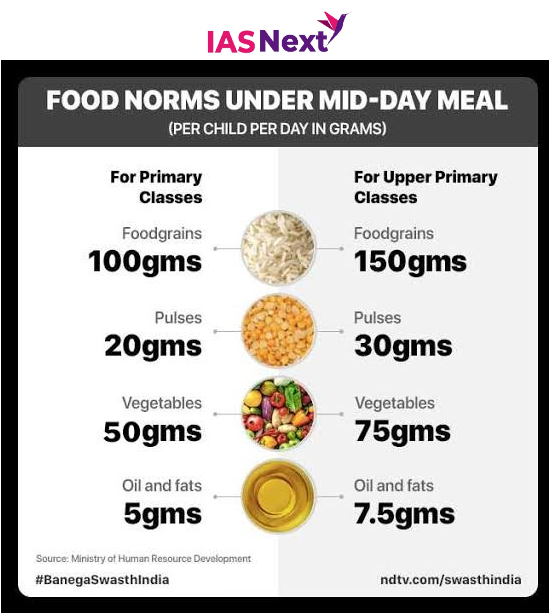CURRENT AFFAIRS
Get the most updated and recent current affair content on Padhaikaro.com
Midday meal scheme in India
- IAS NEXT, Lucknow
- 11, Nov 2021

Reference News:
Flagging “critical” levels of malnutrition and anaemia among children, the Union Government has urged the states to explore the possibility of introducing millets in the mid-day meal scheme, now known as PM Poshan.
Need for and significance:
Millets or nutri-cereals, which include Jowar, Bajra, and Ragi, are rich in minerals and B-complex vitamins, as well as proteins and antioxidants, making them an ideal choice for improving the nutritional outcome of children.
About the Mid-Day meal scheme:
The scheme guarantees one meal to all children in government and aided schools and madarsas supported under Samagra Shiksha.
- Students up to Class VIII are guaranteed one nutritional cooked meal at least 200 days in a year.
- The Scheme comes under the Ministry of HRD.
- It was launched in the year 1995 as the National Programme of Nutritional Support to Primary Education (NP – NSPE), a centrally sponsored scheme. In 2004, the scheme was relaunched as the Mid Day Meal Scheme.
- The Scheme is also covered by the National Food Security Act, 2013.
Objective:
Address hunger and malnutrition, increase enrolment and attendance in school, improve socialisation among castes, provide employment at grassroot level especially to women.
The MDM rules 2015, provide that:
- The place of serving meals to the children shall be school only.
- If the Mid-Day Meal is not provided in school on any school day due to non-availability of food grains or any other reason, the State Government shall pay food security allowance by 15th of the succeeding month.
- The School Management Committee mandated under the Right to Free and Compulsory Education Act, 2009 shall also monitor implementation of the Mid-day meal Scheme.
Nutritional norms:
In terms of calorie intake, as per the MDM guidelines, the children in primary schools must be provided with at least 450 calories with 12 grams of protein through MDM while the children in upper primary schools should get 700 calories with 20 grams of protein, as per MHRD.
The food intake per meal by the children of primary classes, as provided by MHRD is 100 grams of food grains, 20 grams of pulses, 50 grams of vegetables and 5 grams of oils and fats. For the children of upper-primary schools, the mandated breakup is 150 grams of food grains, 30 grams of pulses, 75 grams of vegetables and 7.5 grams of oils and fats.
